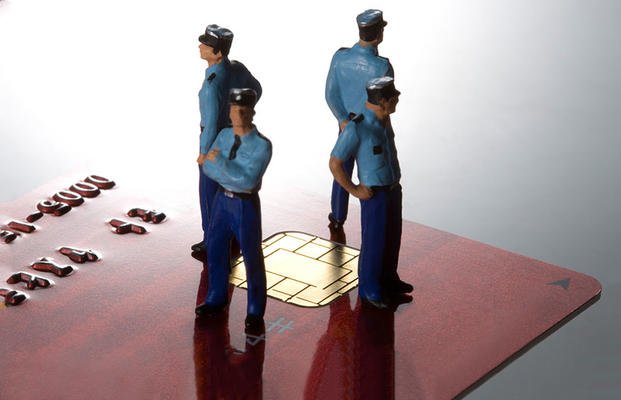Following huge data breaches at major retailers and hotel chains, interest in chip-enabled credit cards has surged. While these cards are new to most Americans, major credit card companies have been transitioning to the new technology for some time. That's because chip cards are a safer way to conduct financial transactions at retail locations, helping to reduce fraudulent charges.
Coming to your wallet
First introduced in France in 1992, chip-enabled cards have been the standard in Europe and Canada for years. The United States has been slower to adopt the technology, reluctant to replace expensive payment terminals and ATMs that use magnetic stripe technology. But that's all about to change. Most major card issuers have set a deadline of October 2015 for transitioning cards and card readers to smart chip technology. After this date, merchants who haven't upgraded their systems to accept chip cards may be liable for any fraudulent use that occurs on cards they accept using magnetic stripe technology.
How they work
Chip cards, also called EMV cards (named for the original developers of the chip technology: Europay, MasterCard® and Visa®), are cards embedded with a microchip. This feature makes it more difficult to replicate payment information than others equipped with traditional magnetic stripe technology. Traditional magnetic stripe cards store static data, which can be easily replicated and used to create a counterfeit copy of the card. Chip-enabled cards are inserted into or waved near a card reader, rather than swiped. The embedded microchip creates dynamic data unique to each transaction. This data is then verified by the seller's chip-enabled card reader to ensure authenticity. There are two types of chip cards:
- Chip and PIN. Cards equipped with a microchip that require your personal identification number (PIN) when making a transaction, rather than writing your signature on a receipt. PINs are much harder to forge than a signature.
- Chip and signature. Cards equipped with a microchip that require just a signature as traditional magnetic stripe cards do. These cards are still difficult to replicate, but they don't require a PIN entry. Chip and signature cards also cannot be used at unattended card readers when traveling abroad (a PIN is required).
What to expect
New cards will look just like a traditional card, with the noticeable addition of a small microchip embedded along with the standard magnetic stripe. That way, you can use the same card even if a merchant hasn't yet upgraded their payment technology.
If you want to receive the extra security benefits of your chip card, make sure you insert it into a chip-enabled card reader. Remember, if you have a choice, insert rather than swipe for maximum protection!











